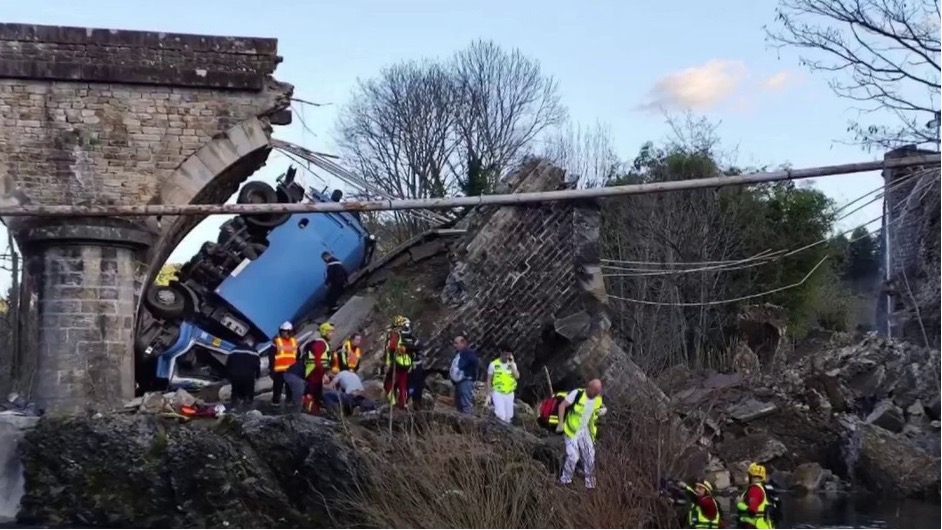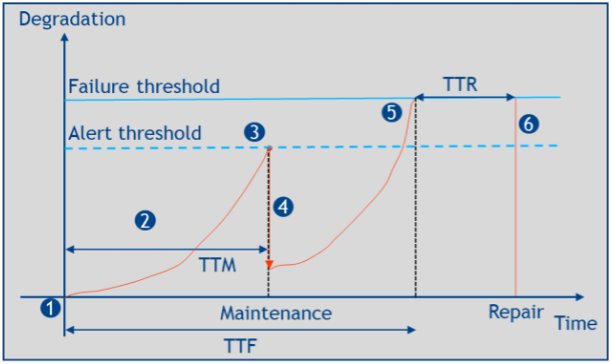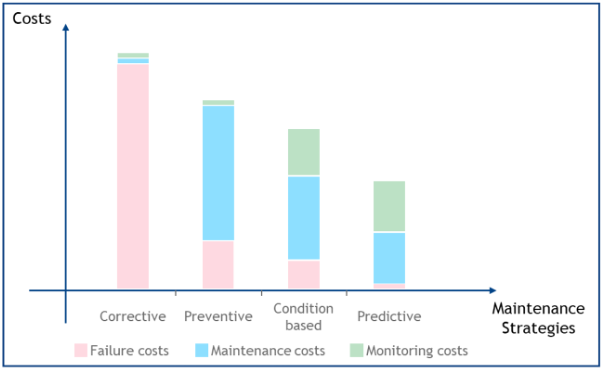Maintenance strategies are pivotal in ensuring the longevity and safety of infrastructure assets across various industries. Ranging from corrective to proactive methods, these strategies play a crucial role in prolonging asset lifespan, optimizing performance, and mitigating risks of downtime and failure.
The recent collapse of a stone bridge in Chamborigaud, Gard, underscores the urgency of robust maintenance practices in safeguarding critical structures. Amidst evolving infrastructure management paradigms, the selection of appropriate maintenance approaches is paramount, necessitating considerations of asset criticality, operational needs, and technological integration.

This integration of technology, including sensors and data analytics, has revolutionized maintenance practices, enabling real-time monitoring and predictive insights.
By comprehending the significance of maintenance and leveraging technological advancements, organizations can effectively manage their infrastructure assets, ensuring operational efficiency, regulatory compliance, and stakeholder confidence.

In the lifecycle of any infrastructure asset, there exists a natural progression marked by stages of installation, operation, degradation, intervention, and repair. Understanding this lifecycle is crucial for developing effective maintenance strategies to ensure the asset’s longevity and sustained performance.
Throughout this lifecycle, metrics such as Time to Maintenance (TTM), Time to Failure (TTF), and Time to Repair (TTR) serve as crucial indicators of asset performance and maintenance efficacy. By understanding and actively managing the asset lifecycle, asset owners can implement proactive maintenance strategies to optimize performance, mitigate risks, and maximize the asset’s lifespan and value.

(1) Equipment Installation & Activation
At the outset of an asset’s lifecycle, it is installed and activated, signaling the commencement of its operational phase. During this stage, meticulous planning, engineering expertise, and precise execution are paramount to ensure the asset functions as intended.
(2) Operation & Degradation of Equipment
Once activated, the asset enters a phase of continuous operation, during which it fulfills its designated function. However, over time, various factors such as usage intensity, environmental conditions, and material properties contribute to gradual degradation. Wear and tear, corrosion, fatigue, and other forms of deterioration inevitably occur, impacting the asset’s performance and structural integrity.
(3) Overrun of an Alert/Performance Threshold
As the asset undergoes prolonged operation and experiences degradation, it may approach critical performance thresholds or exhibit signs of impending failure. These thresholds could be based on factors such as structural integrity, operational efficiency, or safety standards. Detection of these indicators serves as an alert for maintenance intervention.
(4) Maintenance Intervention
Timely intervention through maintenance activities becomes imperative to address the detected issues and prevent further deterioration or potential failures. Maintenance interventions can range from routine inspections and minor repairs to comprehensive overhauls, depending on the severity of the observed degradation and the criticality of the asset.
(5) Failure and Time Needed to Repair
Despite proactive maintenance efforts, assets may still experience failures due to unforeseen circumstances or inherent vulnerabilities. When a failure occurs, it triggers downtime and necessitates repair activities to restore the asset’s functionality. The time required for repair depends on factors such as the extent of damage, availability of resources, and efficiency of the repair process.
(6) Repair of the Equipment
Efficient repair processes aim to minimize downtime and swiftly restore assets to operational status. This may involve replacing damaged components, reinforcing structural elements, or implementing corrective measures to prevent similar failures in the future. Effective repair strategies ensure that the asset can resume its intended function with minimal disruption to operations.
In the realm of infrastructure management, maintenance is not merely a corrective response to failures but a proactive endeavor aimed at ensuring the reliability, efficiency, and longevity of assets. Different maintenance strategies have emerged as effective approaches to address the diverse needs and challenges associated with managing infrastructure assets across various industries.
These maintenance strategies encompass a spectrum of methodologies, ranging from corrective interventions to predictive analytics-driven preemptive measures. Each strategy offers unique advantages and caters to specific operational requirements and budgetary constraints.

Understanding the nuances of different maintenance strategies is essential for asset owners and managers seeking to optimize asset performance while minimizing operational disruptions and costs.
From corrective maintenance, which addresses issues as they arise, to predictive maintenance, which leverages data analytics to anticipate failures before they occur, the array of strategies available provides a comprehensive toolkit for asset managers to navigate the complexities of maintenance planning and execution.
Characterized by responding to failures as they occur, corrective maintenance entails addressing issues after they manifest. In civil engineering, emergency repairs to infrastructure components exemplify corrective maintenance.
When to use:
Benefits:
Drawbacks:
Example: Emergency Bridge Deck Patching
In the case of corrective maintenance for a highway bridge, engineers may respond to reports of potholes or surface cracks on the bridge deck. Upon inspection, if significant damage is discovered that poses an immediate safety risk to motorists, emergency patching or repair work would be initiated. This corrective approach aims to swiftly address critical issues to ensure the continued functionality and safety of the bridge.
This proactive approach involves scheduled inspections and maintenance tasks to forestall potential failures. Regular bridge inspections to detect and address structural weaknesses exemplify preventive maintenance practices.
When to use:
Benefits:
Drawbacks:
Example: Routine Bridge Inspections and Maintenance
Preventive maintenance for a highway bridge involves scheduled inspections and routine maintenance activities to identify and address potential issues before they escalate. Engineers conduct regular visual inspections, structural assessments, and maintenance tasks such as cleaning debris, repairing guardrails, and repainting surfaces. By proactively maintaining the bridge’s structural integrity and addressing minor defects early on, preventive maintenance helps prevent larger and costlier repairs in the future.
Leveraging real-time data and condition monitoring technologies, this strategy focuses on maintenance triggered by asset condition assessments. For instance, monitoring vibration levels in rotating machinery to preemptively identify bearing failures.
When to use:
Benefits:
Drawbacks:
Example: Structural Health Monitoring of Bridge Components
Condition-based maintenance employs real-time monitoring and data analysis to assess the health and performance of bridge components. In the case of a highway bridge, engineers may deploy sensors to monitor parameters such as vibration, strain, and corrosion levels in critical structural elements such as support beams and cables. By continuously monitoring these parameters, engineers can detect early signs of deterioration or damage and schedule maintenance interventions accordingly, optimizing the bridge’s lifespan and performance.
By employing advanced analytics and predictive algorithms, predictive maintenance forecasts asset failures before they transpire. In civil engineering, utilizing sensor data to predict pipeline leaks exemplifies predictive maintenance.
When to use:
Benefits:
Drawbacks:
Example: Predictive Maintenance of Bridge Bearings
Predictive maintenance utilizes advanced analytics and predictive algorithms to forecast equipment failures before they occur. In the context of a highway bridge, engineers may implement predictive maintenance for bridge bearings, which support and facilitate the movement of bridge spans. By analyzing data from sensors embedded within the bearings, such as temperature and displacement measurements, engineers can detect abnormal trends indicative of impending bearing failures. Predictive maintenance allows for timely replacement or repair of bearings before they fail, minimizing the risk of structural damage and ensuring the continued safety of the bridge.
When evaluating maintenance strategies for a highway bridge, it’s crucial to consider various costs associated with each approach. In infrastructure asset management, the terms “failure costs,” “maintenance costs,” and “monitoring costs” represent different categories of expenses associated with maintaining and managing assets.

Failure costs refer to the financial consequences incurred as a result of asset failures or breakdowns. These costs can be categorized into two main types:
Identifying and quantifying failure costs is essential for evaluating the overall impact of asset failures and determining the cost-effectiveness of different maintenance strategies.
Maintenance costs encompass all expenses incurred in the process of maintaining and servicing assets to ensure their reliability, functionality, and longevity. These costs can include:
Understanding maintenance costs is crucial for budgeting, resource allocation, and evaluating the cost-effectiveness of different maintenance strategies over the asset’s lifecycle.
Monitoring costs refer to the expenses associated with implementing and maintaining monitoring systems to assess the condition, performance, and health of assets. These costs can include:
Monitoring costs are essential for implementing predictive maintenance strategies, condition-based maintenance programs, and performance monitoring initiatives to optimize asset management practices and mitigate risks of failure.
In exploring the intricacies of asset lifecycle management and diverse maintenance strategies, it becomes evident that proactive approaches are essential for ensuring the longevity and reliability of critical infrastructure. From the installation phase to eventual decommissioning, the adoption of preventive, condition-based, and predictive maintenance strategies offers opportunities to mitigate risks, minimize downtime, and optimize resource allocation. While each strategy presents its own set of costs and benefits, a comprehensive cost analysis underscores the importance of balancing immediate needs with long-term sustainability. By leveraging insights from the asset lifecycle and embracing cost-effective maintenance practices, stakeholders can maximize asset performance, enhance resilience, and safeguard public safety for generations to come.